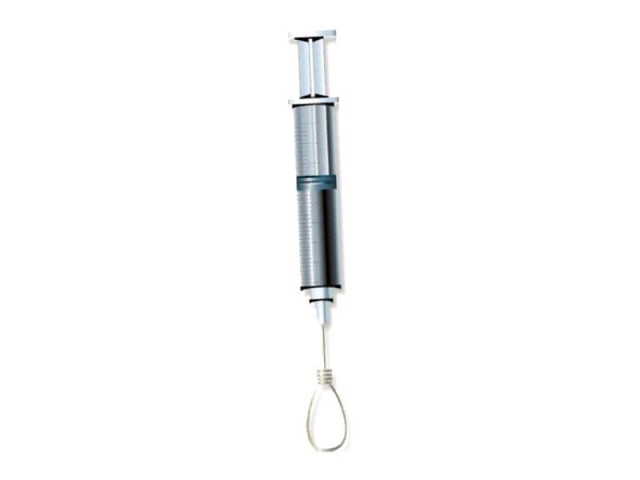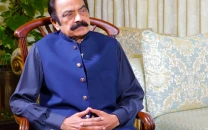Addiction rising: Pakistani youth, high going on higher
Drug use in Pakistan 2013 survey reveals use, dependency increasing rapidly.

Drug use in Pakistan 2013 survey reveals use, dependency increasing rapidly.
Pakistan, once largely poppy free, has now become one of the main drug transit states in the world, with 40 per cent of the world’s opium supply moving through the country. This was stated by Cesar Guedes, representative of the United Nations Office on Drugs and Crime while launching “The Drug Use in Pakistan 2013 Survey Report” here on Tuesday.
The national drug use survey, conducted after ten years, is lined with worrying facts and figures, and insights into the region’s current geopolitical scenario.
In the 80s, poppy production was just limited to the Federally Administered Tribal Areas and Khyber-Pakhtunkhwa. With effective interventions from the government, production fell from approximately 800 tons in 1980 to nine tons in 1999. However, over the years, lack of policies and weak border management has made Pakistan a transshipment point for 40 per cent of the most addictive poppy derivative.
On one side of Pakistan’s border is a country that cultivates 70 per cent of the world’s opium, while on the other, there are companies that are advancing in chemical precursors.
The frequency of shipments sneaking through Pakistan to reach the European and Asian markets has given Pakistan traffickers an opportunity to bank on the opportunity and form their own local markets.
“The problem is not out of control, but could be curbed” Said Ceaser. “We are not here to point fingers, but almost all countries from A to Z are a part of this menace” He added.
The report is a collaborative research effort between the Narcotics Control Division, Pakistan Bureau of Statistics, and UNODC. It states that a sizable proportion of Pakistan’s population from 15 to 64 suffer from the devastating consequences of substance abuse.
With an increase in production of drugs in the country, the highest levels of use are seen in the provinces which border the principle poppy-cultivating areas in neighboring Afghanistan. An estimated 6.7 million adults in Pakistan have used drugs in the past year, 78 per cent of whom are men and 22% are women.
Cannabis — in its purified form, hashish — was found to be the most commonly used drug in Pakistan, with by 3.6 per cent of the adult population, or four million people listed as users.
Opiates, namely opium and heroin, are used by almost one per cent of overall drugs users, with 860,000 chronic heroin users.
In Pakistan today, almost a quarter of the population is estimated to be living on less than $1.25 a day. The barriers preventing access to structured treatment are exceptionally high. An estimated 4.25 million individuals thought to be drug dependent in Pakistan are in dire need of professional treatment. However, the available structure has just 1,990 beds available for drug treatment and can cater to less than 30,000 drug users a year.
The report also states significant difference in consumption patterns by drug type are observed among men and women.
While men are more likely to use cannabis and opiates, prescription drugs abuse is dominated by women.
Some 67 per cent of women resort to misusing opiate-based painkillers, 25 per cent use tranquillisers and sedatives, while eight per cent are using other drugs which are readily available in pharmacies.
Pakistan is amongst 15 countries with the highest prevalence of HIV/Aids and other blood-borne diseases and only 13 per cent of the general population can accurately name three modes of HIV transmission.
Intravenous drug use is also considerably high, with 430,000 people estimated to be injecting drugs in Pakistan, a higher estimate than ever reported previously.
Moreover, 73 per cent of those injecting drugs share syringes. In 2005, 11 per cent of the population was injecting drugs, which went up to 21 per cent in 2008 and 37.8 per cent in 2011. Another key finding is the emergence of methamphetamines use in some parts of the country.
The country representative for UNODC said that Pakistan needed to take measures outlined in the Pakistan Vision 2025 plan. Moreover, all stakeholders — civil society, government, youth and international partners — needed to participate to create awareness.
There needs to be increase in law enforcement agencies, especially in K-P and Balochistan with focus on synthetic drugs.
Moreover, a nationwide expansion in structured treatment provision for low-threshold drug users is needed.
“Drug use is affecting every fibre of society,” said Narcotics Control Division Joint Secretary Zulaqarnain Amir. The official assured participants that the government is committed to trying to eradicate the menace of drug use from Pakistan.
Published in The Express Tribune, March 5th, 2014.



















COMMENTS
Comments are moderated and generally will be posted if they are on-topic and not abusive.
For more information, please see our Comments FAQ